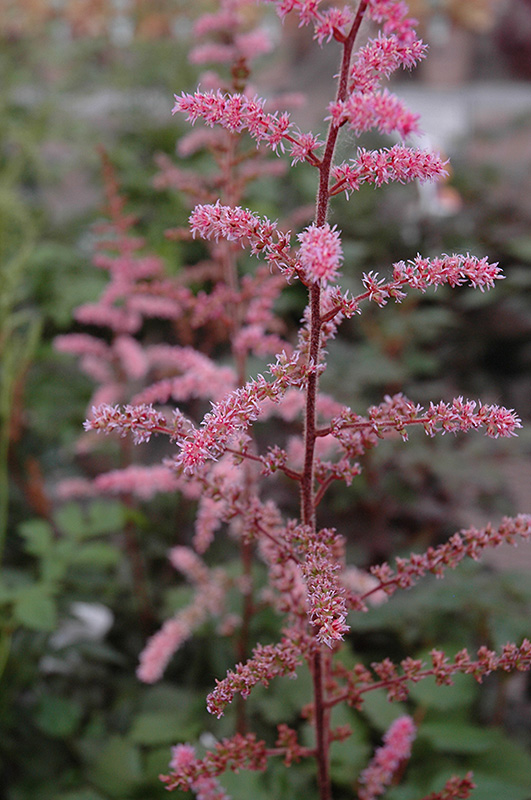VANDERMEER
PLANT LIBRARY
Find the perfect plant for your space by browsing through this extensive selection that we typically carry every year.
This library is for information purposes only.
Color Flash Astilbe
Astilbe x arendsii 'Color Flash'
Height: 20 inches
Spacing: 16 inches
Sunlight:
![]()
![]()
Hardiness Zone: 4a
Other Names: False Spirea
Description:
Striking light -pink colored plumes rising above glossy leaves that start out chartreuse and turn bronze for the summer; perfect in a shady spot with dappled light; prefers moisture so water regularly for abundant flowers and nice foliage
Ornamental Features
Color Flash Astilbe has masses of beautiful plumes of pink flowers at the ends of the stems from early to mid summer, which are most effective when planted in groupings. The flowers are excellent for cutting. Its deeply cut ferny compound leaves emerge chartreuse in spring, turning burgundy in colour throughout the season.
Landscape Attributes
Color Flash Astilbe is an herbaceous perennial with an upright spreading habit of growth. Its relatively fine texture sets it apart from other garden plants with less refined foliage.
This is a relatively low maintenance plant, and is best cleaned up in early spring before it resumes active growth for the season. It is a good choice for attracting bees and butterflies to your yard, but is not particularly attractive to deer who tend to leave it alone in favor of tastier treats. It has no significant negative characteristics.
Color Flash Astilbe is recommended for the following landscape applications;
- Mass Planting
- Rock/Alpine Gardens
- Border Edging
- General Garden Use
Planting & Growing
Color Flash Astilbe will grow to be about 16 inches tall at maturity, with a spread of 18 inches. When grown in masses or used as a bedding plant, individual plants should be spaced approximately 16 inches apart. Its foliage tends to remain dense right to the ground, not requiring facer plants in front. It grows at a medium rate, and under ideal conditions can be expected to live for approximately 10 years. As an herbaceous perennial, this plant will usually die back to the crown each winter, and will regrow from the base each spring. Be careful not to disturb the crown in late winter when it may not be readily seen!
This plant does best in partial shade to shade. It requires an evenly moist well-drained soil for optimal growth. It is not particular as to soil pH, but grows best in rich soils. It is somewhat tolerant of urban pollution, and will benefit from being planted in a relatively sheltered location. Consider applying a thick mulch around the root zone over the growing season to conserve soil moisture. This particular variety is an interspecific hybrid. It can be propagated by division; however, as a cultivated variety, be aware that it may be subject to certain restrictions or prohibitions on propagation.





